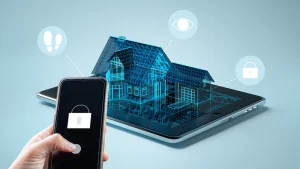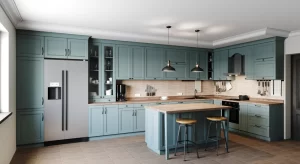
It’s exciting to organize a home design event—but let’s be real, it can also be just a tad daunting. If you’re hosting a neighborhood pop-up showcase, an open house for interior designers, or a gigantic home expo, there are just so many things to get right. The good news? With proper planning, you can turn all that angst into a seamless, successful event that leaves your visitors inspired and impressed.
To guide you along the straight and narrow, here’s a step-by-step checklist that’s better than just box-ticking. It’s meant to walk you through it in straightforward, plain English—like having that one friend who’s done this before and who doesn’t want you to get caught out in the traps we all always seem to fall into. So, let’s start.
- Define the Purpose and Goals
Take a moment to ask yourself these questions before you reserve space or start sketching out floor plans: Why am I hosting this event? To mark new design trends? Promote your services? Mingle with professionals? Acquire new clients?
Once you know your purpose, it’s simple to shape the rest of the event. Clearly articulated goals help determine whom you invite, how you promote the event, and what type of content or exhibits to include.
Think of this step as laying the foundation. Without it, everything else might be glitzy-looking—but short-lived.
- Choose the Right Venue
Location is paramount. Whether it’s coordinating an intimate design speech at a hip boutique showroom space or a high-energy expo at a convention center, the location you choose has to support the mood and purpose of your event.
Consider availability (is it easy to locate and park at?), space (can it possibly hold your estimated number of guests?), and ambiance (does it align with your business and the theme of your event?).
Don’t ever forget logistics like lighting, sound equipment, bathrooms, and even loading docks if you’re bringing huge displays or furniture. A solid location can turn the event from good to unforgettably stellar.
- Have a Realistic Budget
It’s easy to want to spend it all when you want your event to be phenomenal. But trust us, setting a realistic budget right up front will keep you from major headaches down the line.
Label your probable costs—space, food, decorations, signs, promotion, entertainment, staff, and contingency (always reserve for surprises). Keep an eye on your costs carefully and spend on those that have the greatest direct impact on guest experience.
Creativity will generally budget best. A well-planned, small, close-in event will create a greater impact than a huge, over-spending show.
- Create a Timeline (and Stick to It)
A well-thought-out timeline keeps your head on straight and your event on schedule. Start by counting backward from the event date and plotting out major milestones. When will you lock in a venue? When will marketing begin? When will vendors need final details?
Give yourself buffer time between every step—you’ll thank you in the long term. Tools like Google Sheets, Trello, or even a good old-fashioned paper planner can help you keep track of and organize tasks.
Tip: Don’t try to do everything by yourself. Wherever possible, assign tasks to a team or recruit volunteers so that you don’t get overwhelmed.
- Curate the Content and Layout
Once logistics are in motion, it’s time to create the center of your event: content. This can mean selecting speaker topics, selecting vendors or designers to feature, or organizing interactive elements like DIY stations or tech demonstrations.
Think about flow: How will the attendees move through the space? Where will they enter and exit? Will there be areas for networking, relaxing, or grabbing a beverage?
A well-designed design not only looks good but also helps in creating a memorable and interesting experience.
- Send Out Invitations (The Right Way)
Now for one of the most crucial pieces of the puzzle—getting people to actually attend. That starts with creating solid, on-brand invitations that reflect the tone of your event. Sure, electronic invitations are convenient, but don’t discount the power of printed invitations. In fact, certain event planners still go so far as to print invitations in order to create a more tangible, touchable impression.
A beautifully designed printed invite can be a showstopper on someone’s fridge or desk—and a call to action to show up. It’s particularly great for upscale or local community events where branding and attention to detail are important.
When writing your invite, include key information (who, what, where, when, why) and make the RSVP process ridiculously easy. And digital or printed, send them out early—hopefully 4 to 6 weeks beforehand.
- Promote Like You Mean It
Promoting is when your event really starts to become mainstream in the eyes of the public. Use social media, email newsletters, local media, and design communities to buzz about your event.
Go visual crazy—sneak peek shots of guest designers, behind-the-scenes action, or countdown anecdotes will make people excited. Consider partnering with local influencers or design bloggers to further spread the word.
Don’t forget to list your event on neighborhood calendars and websites (like nvhomeshow.com!) to reach targeted markets already interested in homes and design.
- Prepare the Materials and Vendors
Two weeks before the event, start to double-check everything. Are vendor contracts signed off on? Is the technical equipment tested and functioning properly? Have all the signs, banners, and print materials been ordered?
If you’re offering brochures, branded merchandise, or takeaway items, make sure they arrive on time. Confirm arrival times with vendors, rental companies, caterers, and anyone else who’s helping bring your vision to life.
It’s also smart to have a printed event-day checklist to keep everything organized—especially when things start to move quickly.
- Plan for the Day-Of (and Murphy’s Law)
Even with the best planning, something always manages to crop up on event day. Create a “just in case” pack with the following: tape, scissors, phone chargers, spare signs, name tags, and snacks. Appoint a go-to person (even if it’s you) for any last-minute issues.
Arrive early, do a walkthrough of the space, and test any tech components. Take a deep breath and trust your prep—you’ve done the work. Now it’s time to enjoy the moment and be present for your guests.
- Follow Up and Reflect
The celebration may be over, but your work isn’t quite done. Send follow-up thank yous to guests, vendors, and hidden helpers. A simple email with highlights, pics, or even a quick survey can leave a lasting impression and give valuable feedback for the next event.
Take a moment to look back—what did you do right? What didn’t you do right? Document your observations while they’re fresh so you can learn from your success and keep raising the bar.
Final Thoughts
Planning a home design event can be a big undertaking, but with the right mindset and a solid step-by-step checklist, it becomes much more manageable—and even fun. Whether you’re a seasoned event planner or trying this for the first time, remember that your goal is to create a space where people can connect, be inspired, and leave with something valuable.
By focusing on the details, staying organized, and adding thoughtful touches like print invitations, you’ll craft an experience that stands out for all the right reasons. So go ahead—start planning, stay flexible, and don’t forget to enjoy the process.








